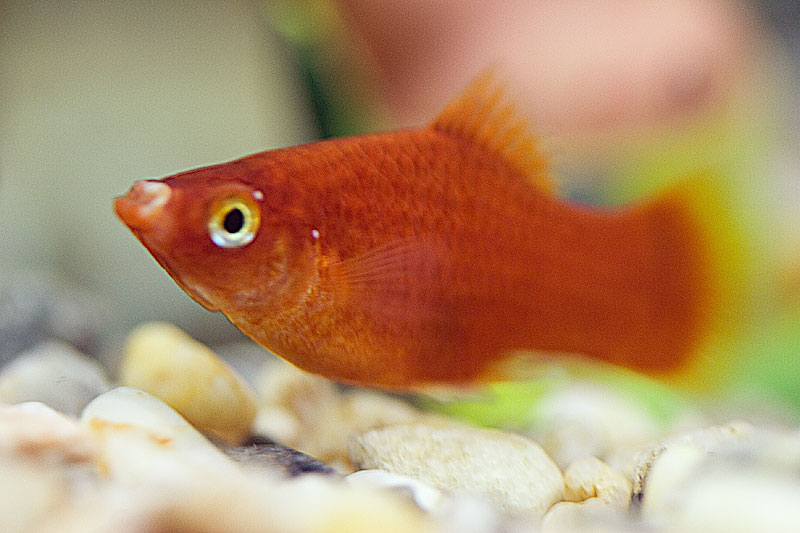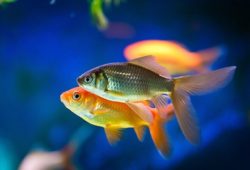Dealing With Fish Ich In A Fish Tank
In the article I’m going to tell you about Dealing With Fish Ich In A Fish Tank. Fish Ich are aquarium fish diseases that are so common that almost every fish breeder will have to face it at some time. While in most cases Fish Ich really isn’t that deadly, it will cause the fish to itch, making them rub themselves against fish tank decoration to relieve themselves and this constant rubbing will cause their skin to tear. Open wounds that are untreated will eventually cause the fish to die.
The right way to solve a problem is to understand it first. Treating the cause is always better than solving the effect.

Contents
What Causes Fish Ich
Fish Ich is caused by a protozoa known as Ichthyophthirius multifiliis, which is capable of multiplying at an extreme fast rate. The enclosed condition of a fish tank and the lack of immunity of bred fish makes it even easier for Fish Ich to spread. The protozoa attaches itself to the outer skin of the fish and begin to feed on the skin and outer tissue. The protozoa will eventually cause a cyst that allows it to rapidly multiply within the enclosed tissue, feeding even more on the fish. This cyst can easily be seen as white spots on the fish and is very itchy.
After some time, the cyst will burst and the protozoa will fall onto the substrate and multiply even more, waiting to infect other fish. Warmer temperatures will speed up the multiplying rate of the protozoa and the rate of infection.
The physical symptoms of Fish Ich is of course the white spots. Initially it will be hard to notice as these cysts are tiny and look more like specks of salt on the fish but as they progress, they will cover the entire fish. Left unchecked, they will eventually damage the fish gills and vital organs, causing death.
The fish will also start to lose they appetite, seem restless and constantly scratch themselves against anything, which will cause open wounds.
Treatment For Fish Ich
Fish Ich that is encapsulated in the cyst lie in a protective shell and is almost impossible
to treat. That is why we will need the cyst to burst open so that the Fish Ich is released. To do this we will firstly have to raise the temperature of the fish tank water a little in order to speed up the life cycle of the protozoa. Raise the temperature slowly over the next two days until a maximum temperature of 80 degrees Celsius but only do so if this level is not harmful to the fish.
Once you have reached this temperature, begin the treatment over a the next few days to a week. Do not remove the infected fish to quarantine tank, what you want to do is have all the cyst burst within your original tank to kill off all the protozoa.
The most effective treatment for Fish Ich contains formalin but you could also use Malachite Green. However, when using Malachite Green, be extremely careful as it is toxic to invertebrates and other aquatic life. You will need to remove any life that is not scaled into a separate tank during treatment. You can see a list of the best Fish Ich medication in the Recommended List below this article.
Another important thing that you will need to do is to remove the carbon fish tank filters media from your fish tank filters. Carbon fish tank filters are used to treat any chemicals in an aquarium so remove them or they will absorb the medication that you are using in the water.
Preventing Fish Ich From Infecting Your Aquarium
Prevention is always better than cure. It is actually quite easy to prevent Fish Ich if you know how it infects the tank. The only way for Fish Ich to get in is if you put something contaminated into the tank. This could be a new fish or even used decoration or gravel.
Before putting in new fish into the tank, inspect the fish first for any signs of disease. It would also be a great idea to quarantine the new fish for a couple of days and monitor it for signs of disease.
Before putting in any used decoration or gravel into your tank, wash it thoroughly with tap water and set it to air dry in the sun. Tap water contains chlorine which will kill off any microrganisms and the UV rays of the sun will finish off any that may be left over. Never use detergent as it will leave chemical traces that you would accidentally introduce into the tank water.
Lastly, always maintain the cleanliness of the tank, encourage good biological filtration and don’t forget your water changes.



